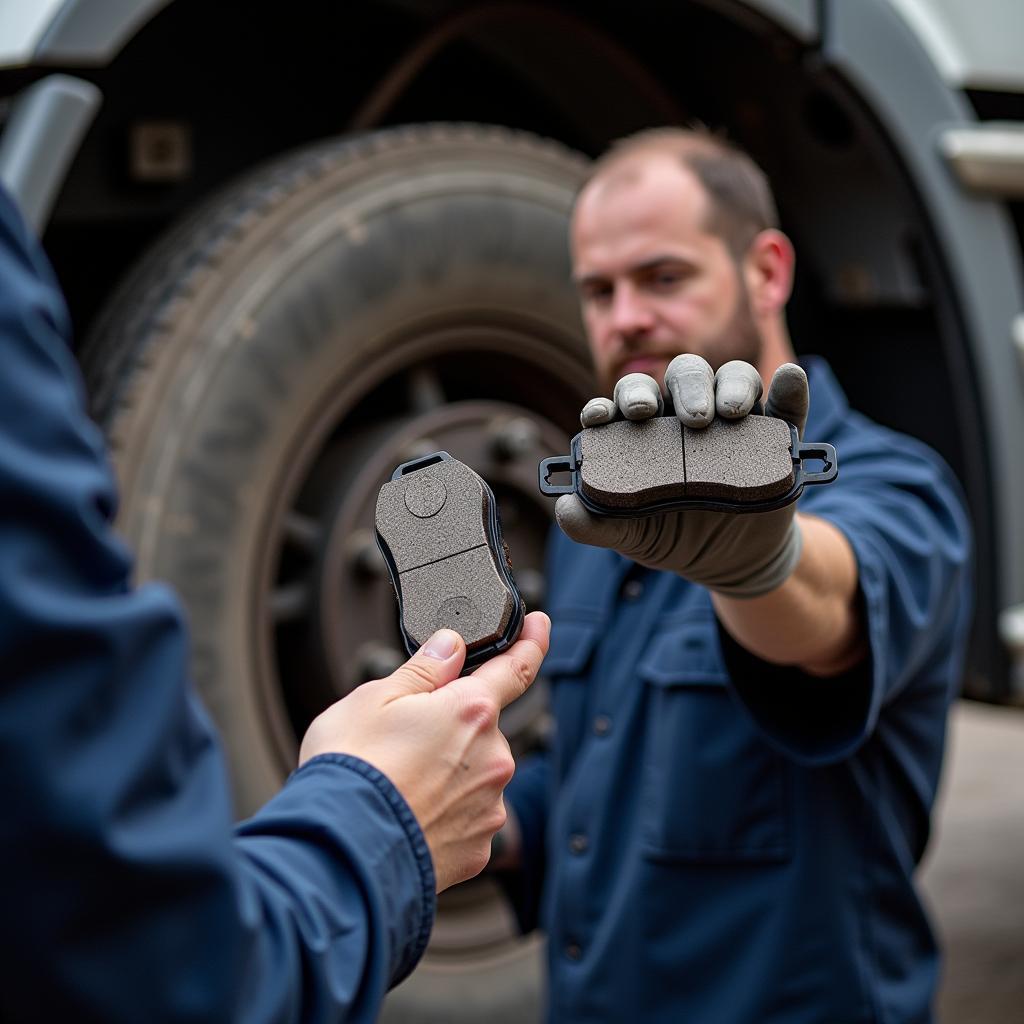Towing with your F150 is a popular way to enjoy the great outdoors. However, if you see the brake warning light come on while towing, it can be a cause for concern. This article will guide you through the potential causes of this issue, how to diagnose it, and the solutions to fix it.
Understanding the F150 Brake Warning Light When Towing
The brake warning light on your F150 serves as an important indicator of potential problems with your braking system. When the light comes on while towing, it usually suggests a malfunction in a system that is essential for safe braking, especially when hauling heavy loads.
Common Causes of the F150 Brake Warning Light When Towing
Several factors can trigger the brake warning light while towing. Some of the most common causes include:
1. Low Brake Fluid
Low brake fluid is a common culprit behind a brake warning light. When towing, your braking system works harder to slow down the vehicle and its trailer. This can lead to increased brake fluid consumption, and if the level drops too low, the warning light will illuminate.
2. Faulty Brake Pad Sensors
Modern vehicles are equipped with wear sensors that monitor the thickness of the brake pads. When these sensors detect that the pads are worn down, they trigger the warning light.
3. Faulty Brake Pressure Sensor
Your F150 has a brake pressure sensor that monitors the pressure in the brake lines. If this sensor malfunctions, it can send incorrect readings to the vehicle’s computer, resulting in the brake warning light coming on.
4. Electrical Issues
Electrical problems can also cause the brake warning light to come on. Loose connections, faulty wiring, or a problem with the brake light switch can all contribute to this issue.
Diagnosing the F150 Brake Warning Light When Towing
To accurately diagnose the cause of the brake warning light, you’ll need to perform a few checks:
1. Check the Brake Fluid Level
Start by inspecting the brake fluid reservoir. If the level is low, you need to add more brake fluid and identify the leak causing the fluid loss.
2. Inspect the Brake Pads
Check the brake pads for wear and tear. If the pads are worn down, you’ll need to replace them.
3. Check the Brake Pressure Sensor
The brake pressure sensor can be tested using a diagnostic scanner. A mechanic can connect the scanner to your F150’s computer system and read any error codes related to the sensor.
4. Inspect Electrical Connections
Visually inspect the electrical connections to the brake system, including the brake light switch, brake pad sensors, and brake pressure sensor. Look for any signs of corrosion, damage, or loose connections.
Solutions for the F150 Brake Warning Light When Towing
Once you’ve diagnosed the cause of the brake warning light, you can take appropriate steps to fix the problem:
1. Top Up Brake Fluid
If the brake fluid level is low, top it up with the correct type of brake fluid. However, if the brake warning light remains on after adding fluid, there is likely a leak, and a professional inspection is recommended.
2. Replace Brake Pads
If the brake pads are worn down, replace them with new ones. This is a relatively simple repair that can be performed by a qualified mechanic.
3. Replace Faulty Brake Pressure Sensor
If the brake pressure sensor is faulty, you’ll need to replace it. A mechanic can replace the sensor and clear any error codes from the vehicle’s computer system.
4. Repair Electrical Issues
If you find any electrical problems, you’ll need to repair or replace the faulty components. This may involve replacing the brake light switch, fixing loose connections, or repairing damaged wiring.
Expert Insight:
“When your F150’s brake warning light comes on while towing, it’s crucial to address the issue immediately. Neglecting a brake warning light can lead to serious consequences, especially when carrying a heavy load,” says John Smith, an experienced automotive mechanic.
“Don’t attempt to troubleshoot electrical problems without the necessary expertise. It’s best to have a qualified technician diagnose and repair any electrical issues to ensure safety and prevent further damage,” advises Sarah Jones, a certified automotive technician.
Conclusion
A brake warning light while towing is a serious issue that should be addressed promptly. By understanding the common causes, diagnosing the problem accurately, and applying the appropriate solutions, you can ensure the safe and reliable operation of your F150’s braking system while towing. Remember, safety comes first, and neglecting a brake warning light can have dire consequences.
FAQ
Q: What should I do if the brake warning light comes on while towing?
A: If the brake warning light comes on while towing, pull over to a safe location and inspect the brake fluid level. If the level is low, top it up with the correct type of brake fluid. If the light remains on, you should have the vehicle inspected by a qualified mechanic.
Q: Is it safe to continue towing with the brake warning light on?
A: It is not recommended to continue towing with the brake warning light on. It indicates a potential problem with the braking system, and continuing to tow could compromise your safety.
Q: Can I fix a brake warning light myself?
A: Some simple issues, like low brake fluid, can be addressed by yourself. However, for more complex problems, like faulty brake sensors or electrical issues, it’s best to seek professional help from a qualified mechanic.
Q: How often should I inspect my brake pads?
A: It’s recommended to inspect your brake pads every 6 months or 5,000 miles, whichever comes first. You can also visually inspect the brake pads through the wheel openings, looking for excessive wear or cracks.
Q: What are some signs that my brake pads need to be replaced?
A: Some signs that your brake pads need to be replaced include a squeaking or grinding noise when braking, a spongy brake pedal, or a warning light on the dashboard.

